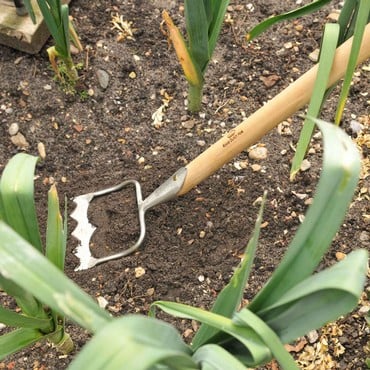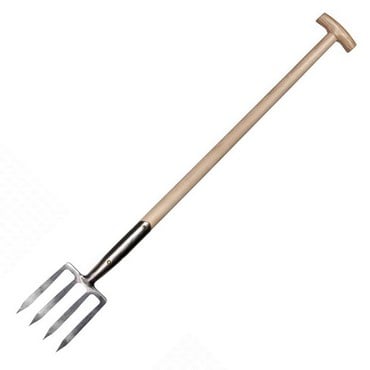Leeks
EASE OF GROWING: (Scale 1-5): 1
HOW TIME CONSUMING:
Leeks are easy to grow and provide a supply of vegetables during the winter months when the hungry gap threatens.
RECOMMENDED VARIETIES:
Musselburgh
Apollo AGM
Carlton AGM
HOME GROWN VS SUPERMARKET:
Much cheaper to grow your own and the taste is amazing.
BEST SITES AND SOILS:
Leeks prefer a sunny site and a heavy, moisture-retentive soil. Improve light soils by adding plenty of well rotted manure before planting.
WHEN TO SOW:
Sow leek seeds into a seed bed in March/April. They can be transplanted to their final growing place in May/June when they are about the thickness of a pencil.
DISTANCE BETWEEN PLANTS:
Seed can be sown in rows 6 inches apart. Don’t worry about spacing of seedlings at this stage as they will be transplanted later.
When transplanting to their final growing space, allow 6 inches between plants and 12 inches between rows.
When transplanting the seedlings, make a hole about 6 inches deep using a dibber. Drop the leek seedling into the hole and then water the hole. This will settle the roots. You do not need to back fill the hole with soil.
WHEN TO HARVEST:
Leeks can be harvested from October through to March. Some early varieties will need harvesting in the autumn, but later varieties will stand all winter long.
FURTHER INFORMATION:
Earth up your leeks as they grow bigger to keep the stems white, but try not to get soil in between the leaves of the plant.
Water the leeks during long dry spells and hoe them regularly to keep the weeds at bay.
Leeks can be harvested as baby veg or left until they are fully grown. They will stand in the ground quite happily over the winter and can be dug up as required.
If you can spare them, leave some of your leeks in the ground and allow them to flower in their 2nd year. They look amazing and the bees love them.
PROBLEMS TO LOOK OUT FOR:
Leeks can suffer from Rust which will appear as yellow/orange spots on the leaves. This is more common in long spells of wet weather. There is no treatment for rust and the plants will cope well with a mild attack, but a bad infection of Rust can stunt the growth of the plants. Pick off the affected leaves and dispose of them or burn them. Do not compost them as the infection can over winter and survive in the compost. It is good practise to rotate the crop to prevent re-infection in subsequent years.
Onion White Rot is a nasty fungus that will cause leaves to become yellow and leave a white fluff on the base of the plants. There is no control for this fungus and affected plants should be disposed of or burned. Leeks should not be grown in the same spot for at least 8 years.


























